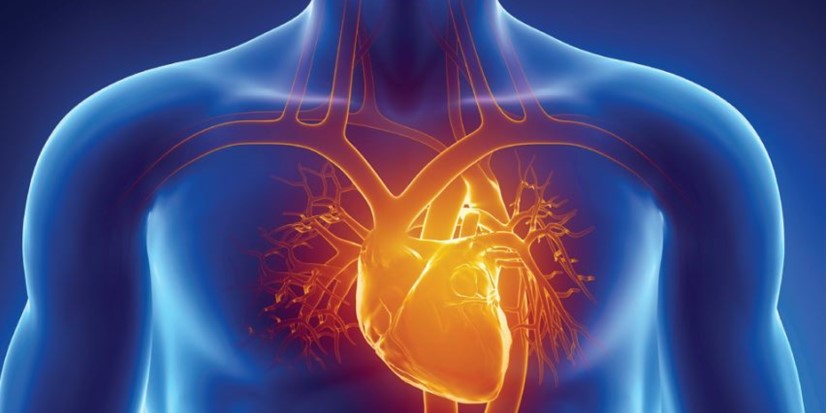How Dr Garcia treats stress-induced heart risks
How Dr Garcia treats stress-induced heart risks
Blog Article
Comprehending the Relevance of Cardiology in Modern Medical Care Providers
Cardiology plays a critical role in modern healthcare, particularly as heart problem continues to be the leading root cause of death worldwide. Advances in diagnostics and therapy have actually changed person treatment, making it possible for earlier treatments and boosted results. Moreover, the change towards precautionary cardiology empowers individuals to handle their wellness proactively. As innovation remains to evolve, the integration of cutting-edge options may even more redefine cardiology's impact on public wellness, motivating a better evaluation of emerging fads and their ramifications.
The Prevalence of Cardiovascular Disease and Its Influence On Public Health And Wellness
Although heart illness stays the leading cause of death globally, its impact expands much past private patients to affect public wellness systems and economic situations. The high occurrence of heart problem positions a substantial pressure on medical care resources, demanding enhanced financing for therapy, rehab, and avoidance programs. Public health efforts must deal with threat factors such as weight problems, smoking cigarettes, and inactive way of livings, which add significantly to the increasing occurrence of heart conditions.Moreover, the economic concern related to heart disease is immense, incorporating not just direct medical expenses yet additionally indirect expenses associated with lost performance and early mortality. Areas face difficulties in handling these expenses, often resulting in variations in health care accessibility and end results. As the populace ages and lifestyle-related threats remain to escalate, the urgency for effective cardiology interventions ends up being critical. Resolving heart condition is not just an issue of private health and wellness however also a crucial public health and wellness priority.
Advances in Cardiac Diagnostics and Imaging Techniques
Current innovations in heart diagnostics and imaging methods have revolutionized the area of cardiology, boosting the capability to discover and keep track of heart diseases. Strategies such as heart MRI, CT angiography, and echocardiography have become significantly advanced, offering detailed pictures of cardiac structures and features. These techniques enable the very early identification of conditions like coronary artery condition, cardiac arrest, and valvular disorders.Moreover, innovations in non-invasive diagnostics, such as wearable modern technology and remote surveillance devices, have actually equipped patients and doctor. These tools promote real-time tracking of heart rhythms and other vital indicators, bring about prompt interventions. Additionally, expert system is being incorporated into imaging evaluation, improving accuracy and performance in diagnosis.
Innovations in Treatment Alternatives for Heart Conditions
Current advancements in cardiology have actually led to considerable innovations in treatment alternatives for heart disease. These include innovative surgical methods that boost procedural results and arising medications that use brand-new avenues for therapy. As the area evolves, these developments play an essential role in enhancing individual care and results.
Advanced Surgical Techniques
Technologies in surgical methods have actually changed the landscape of cardiology, offering new expect individuals with heart disease. Minimally invasive procedures, such as catheter-based interventions, have considerably lowered recovery times and medical facility remains. Methods like robotic-assisted surgical procedure boost accuracy, allowing surgeons to navigate complex anatomical structures with greater accuracy. Improvements in imaging innovation assist in real-time visualization during procedures, improving outcomes. Transcatheter aortic valve substitute (TAVR) exhibits an innovation in dealing with aortic constriction, allowing valve replacement without open-heart surgery. In addition, hybrid strategies that incorporate medical and catheter-based methods provide customized options for different cardiac issues. These innovative medical methods not only boost individual security but additionally broaden treatment options, emphasizing the important function of innovation in modern-day cardiology techniques.
Arising Treatments and medicines
As the landscape of cardiology remains to evolve, arising medicines and therapies play a crucial function in enhancing therapy choices for heart disease. Advancements such as novel anticoagulants and progressed lipid-lowering agents have actually transformed the monitoring of cardiovascular conditions, considerably decreasing person morbidity and death. Additionally, the growth of gene treatments and regenerative medicine uses promising opportunities for dealing with conditions formerly deemed permanent. Clinical tests are continually exposing the efficiency of these therapies, pressing the borders of conventional therapies. Moreover, the combination of electronic wellness technologies assists in personalized medicine, enabling for customized treatment plans based on hereditary and way of living elements. Collectively, these developments highlight the vibrant nature of cardiology, boosting person outcomes and redefining standards of care in modern health care.
The Function of Preventive Cardiology in Individual Treatment
Preventative cardiology plays an essential role in patient care by concentrating on the identification of risk factors that add to heart disease. Through lifestyle modification techniques and early detection techniques, doctor can effectively reduce the incidence of cardio occasions - Cardiologist near me. This aggressive strategy not just enhances client outcomes but also advertises long-lasting health and wellness
Risk Factor Recognition
While heart diseases remain a leading reason for morbidity and death worldwide, efficient threat factor identification works as a cornerstone of preventative cardiology. Recognizing danger elements such as high blood pressure, diabetes, family members, and hyperlipidemia background is vital for early treatment. Healthcare specialists use numerous screening methods to examine these factors, permitting tailored preventative steps. In addition, comprehending a person's way of life selections, such as cigarette smoking and physical lack of exercise, even more educates risk evaluations. This thorough examination enables clinicians to create personalized treatment strategies targeted at mitigating dangers. By focusing on risk element recognition, healthcare systems can improve individual end results and reduce the general worry of heart diseases, inevitably adding to improved public health and wellness approaches and resource allotment.
Way Of Life Alteration Approaches
A multitude of research studies highlights the important duty of lifestyle modification methods in minimizing heart disease risk. These strategies encompass dietary modifications, boosted exercise, smoking cigarettes cessation, and weight monitoring. By taking on a heart-healthy diet abundant in fruits, veggies, entire grains, and lean healthy proteins, people can decrease cholesterol degrees and high blood pressure. Normal exercise reinforces the heart and boosts total cardio health and wellness. Furthermore, stopping cigarette smoking considerably minimizes the danger of heart illness and enhances recovery rates for those with present problems. Weight administration additionally contributes to cardiovascular health by mitigating various other danger elements such as view it now diabetes and hypertension. Applying these way of living alters not only promotes specific wellness but also functions as a foundation of preventive cardiology in patient treatment.
Early Detection Methods
Way of life modifications substantially add to minimizing cardiovascular disease threats, however they are most effective when coupled with early detection strategies. Preventive cardiology stresses the relevance of identifying possible heart problems prior to they intensify into significant conditions. Strategies such as blood pressure monitoring, cholesterol screening, and progressed imaging innovations like echocardiograms play essential duties in assessing cardio health. Biomarkers and hereditary testing likewise enhance the precision of very early detection, enabling tailored precautionary approaches. Regular heart risk examinations encourage doctor to intervene proactively, possibly preventing cardiac arrest and strokes (Dr Garcia). By integrating these very early discovery approaches right into regular treatment, clients can gain from prompt lifestyle interventions and targeted treatments, inevitably improving outcomes and improving lifestyle
Integrating Innovation Into Cardiology Practices
As innovations in technology remain to reshape different areas, the assimilation of cutting-edge devices and systems right into cardiology practices has become vital for improving person treatment and end results. Telemedicine systems allow cardiologists to monitor patients remotely, improving access to care while reducing the burden on healthcare facilities. Wearable devices, such as smartwatches, enable continuous heart rate monitoring, alerting both patients and physicians to possible concerns in real-time. In addition, expert system (AI) is being used to evaluate vast amounts of heart information, helping in early diagnosis and personalized therapy strategies. Advanced imaging methods, including 3D echocardiography, enhance visualization of heart frameworks, causing a lot more accurate interventions. Digital health and wellness records (EHRs) streamline person details administration, guaranteeing that cardiologists have immediate accessibility to important data. With each other, these technological advancements are transforming cardiology, advertising aggressive administration and improved health end results for individuals with cardiovascular problems.
The Importance of Individual Education and Interaction
Patient education and involvement play a critical duty in the management of cardio wellness. By gearing up people with knowledge regarding their problems, treatment choices, and way of living adjustments, health care carriers equip people to take an energetic role in their care. This positive strategy can lead to improved adherence to recommended drugs, nutritional changes, and exercise programs, inevitably lowering the risk of complications.Engagement also promotes a strong patient-provider connection, urging open interaction and trust. When patients feel notified and included, they are most likely to voice issues and ask concerns, which can cause much better professional end results. In addition, instructional sources, such as workshops or electronic systems, can boost understanding and advertise self-management approaches. On the whole, focusing on person education and learning and involvement is crucial for boosting cardio wellness, enhancing high quality of life, and minimizing health care expenses associated with cardiovascular conditions.
Future Fads in Cardiology and Their Possible Effect

Often Asked Questions
What Way Of Living Modifications Can Reduce Heart Condition Danger?
The current question addresses way of living modifications that can greatly lower heart condition danger. Cardiology Jupiter. Adopting a well balanced diet, involving in routine physical activity, keeping a healthy weight, taking care of anxiety, and avoiding cigarette can notably boost cardiovascular wellness
Exactly How Can I Recognize Very Early Signs of Heart Issues?
Recognizing early indicators of heart issues entails tracking signs and symptoms such as upper body pain, lack of breath, fatigue, and uneven heartbeat. Timely recognition of these indicators can trigger necessary medical analysis and intervention for far better outcomes.
What Are the Differences In Between Cardiologists and Heart Surgeons?
The differences in between cardiologists and heart cosmetic surgeons exist in their duties; cardiologists mainly detect and manage heart problems through non-invasive techniques, while heart surgeons carry out medical treatments to correct structural heart problems. Each plays an essential, distinct role.

Just how Commonly Should I Get My Heart Health Checked?
The regularity of heart wellness checks varies based upon private danger factors. Usually, adults should undertake examinations every one to 2 years, while those with status quo might require even more frequent analyses as encouraged by healthcare specialists.
What Role Does Genes Play in Heart Problem Risk?
Genetics greatly affects cardiovascular disease threat, with familial patterns suggesting inherited conditions. Specific genes can incline individuals to high blood pressure, cholesterol issues, and various other cardiovascular issues, highlighting the importance of genetic testing in assessing heart wellness. Heart disease stays the leading reason of death internationally, its impact prolongs much beyond private people to affect public health and wellness systems and economic situations. Public health efforts have to deal with danger factors such as weight problems, smoking cigarettes, and less active way of lives, which contribute Discover More substantially to the climbing incidence of heart conditions.Moreover, the economic problem linked with heart disease is enormous, including not just straight medical costs however likewise indirect expenditures connected to lost productivity and premature mortality. Precautionary cardiology plays a crucial role in client care by focusing on the identification of danger aspects that add to heart condition. Fabricated intelligence (AI) and machine knowing are improving diagnostics and client tracking, allowing early detection of heart illness. The differences between cardiologists and cardiac surgeons lie in their roles; cardiologists primarily take care of and detect heart address problems via non-invasive approaches, while heart specialists carry out surgical procedures to correct architectural heart concerns.
Report this page